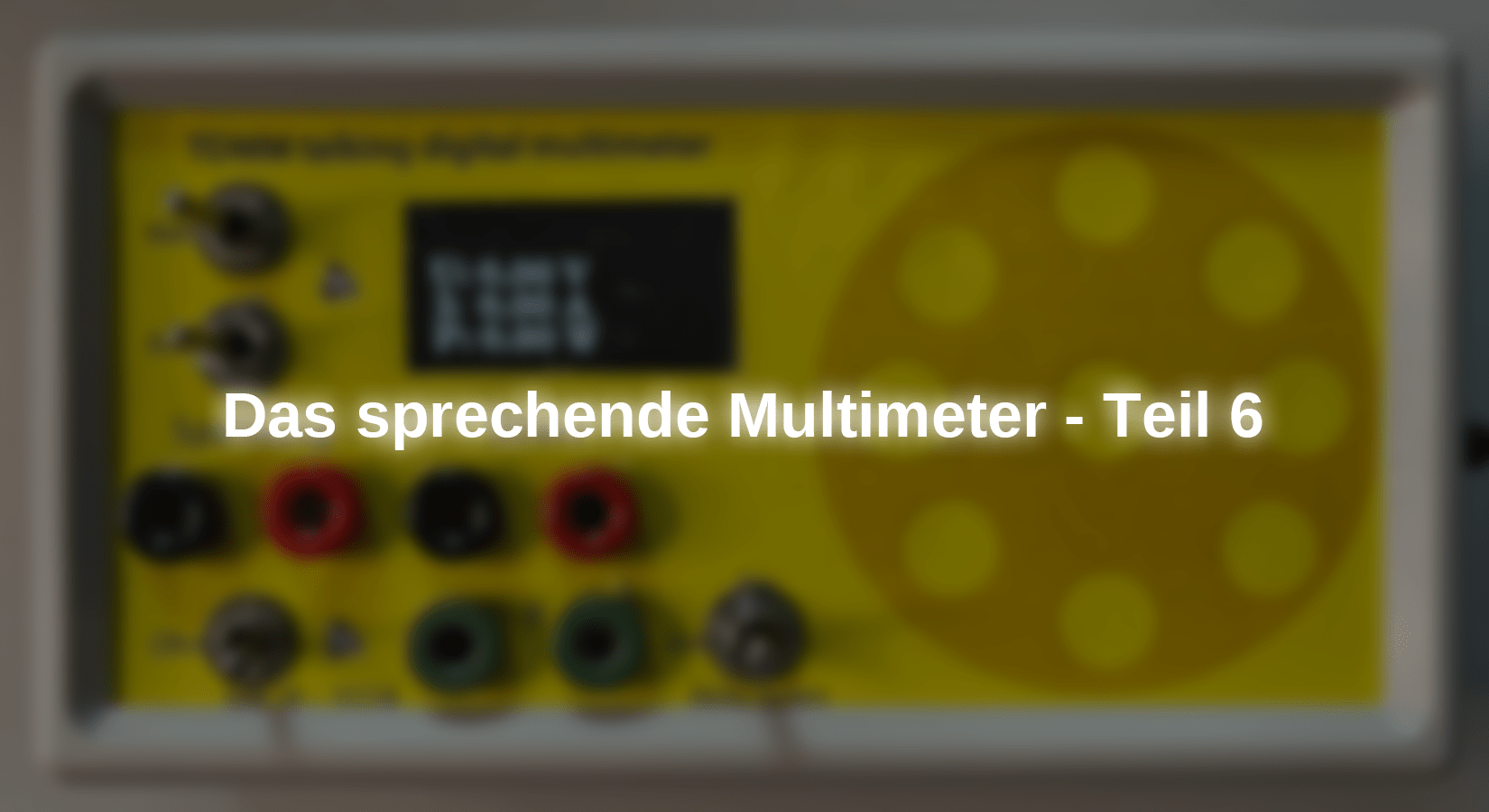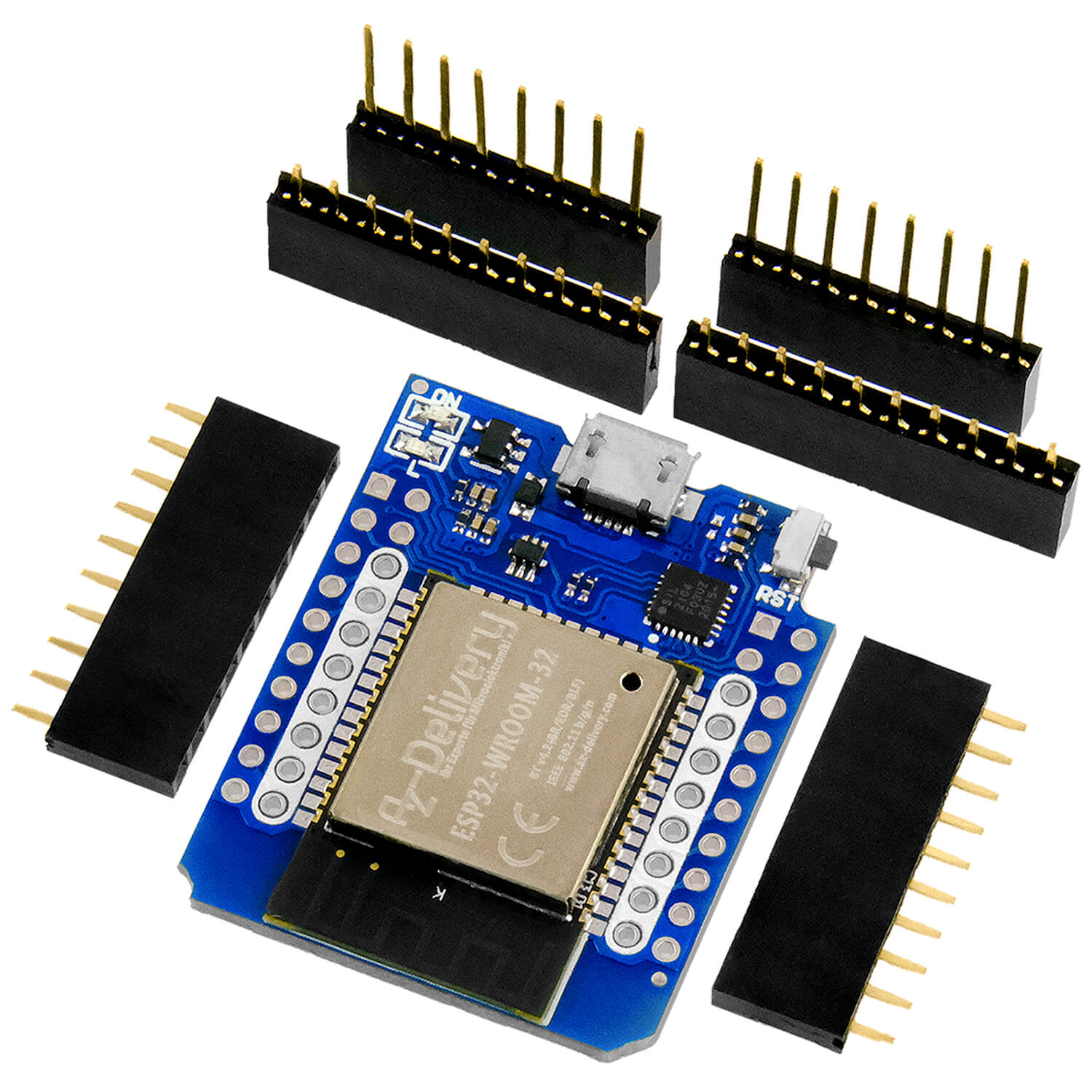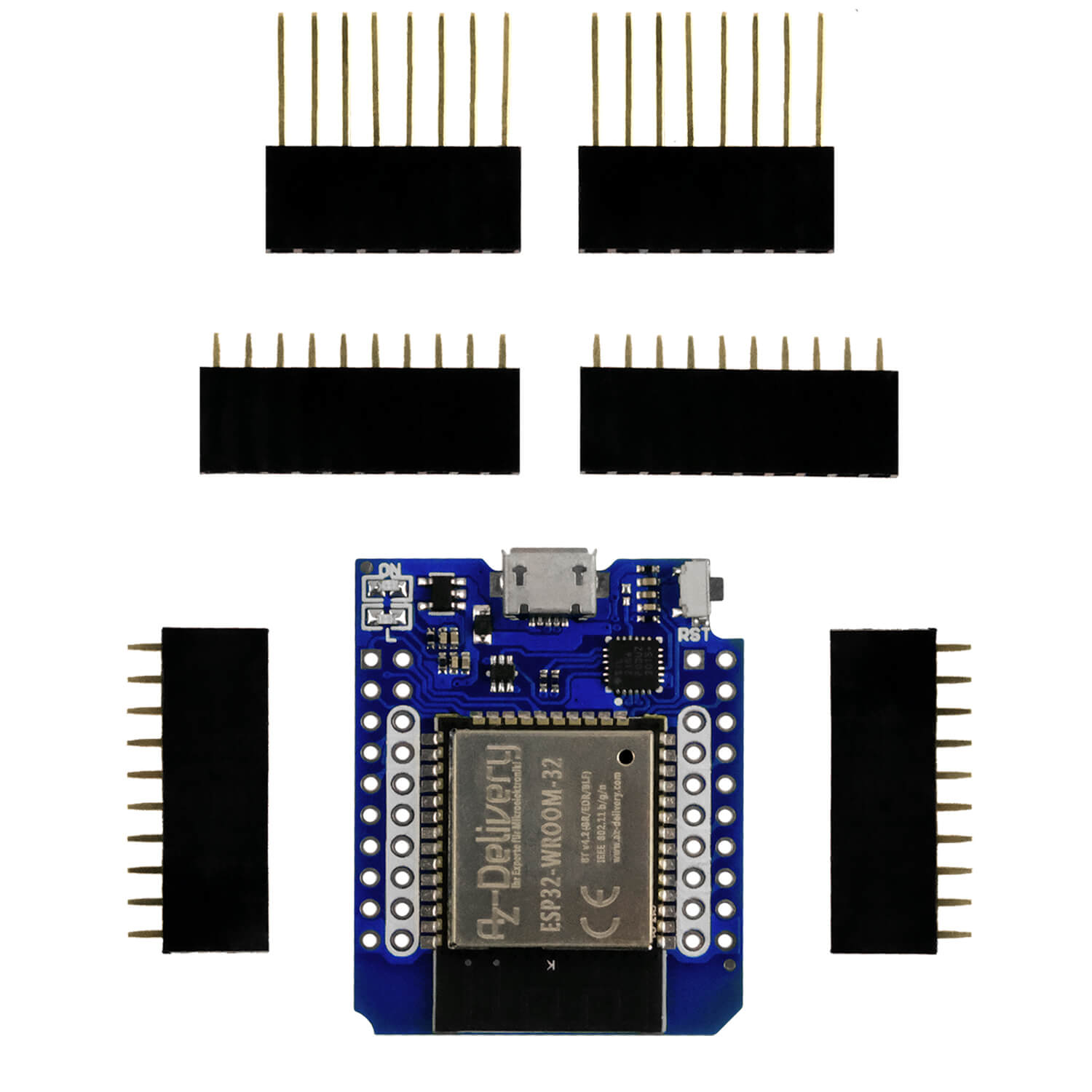The last part of our contribution series (Part 1, Part 2, Part 3, Part 4, Part 5) Should show how to equip the TDMM with a Command Processor with a little programming, which can take over the control of the TDMM and is easy to expand. We also get to know the Library Eeprom.H, with which we can permanently store the settings of the device.
I have integrated a few examples of simple "virtual measuring devices" for you, which, for example, react to the crossing of a limit. A message can be made by voice output, or via the serial port. A message about MQTT is also possible, so that an action can be triggered. For example, a charger can be switched off before the battery is overloaded. This gives us functions of how they can be found in professional measuring devices.
The Command Processor and Eeprom .h can be used in many other projects. It is probably worth studying a little more.
This is how the Command processor works
We see the new library in a sketch
Right before void setup () is the command table. "Definitely wired" is the help function, which with a "?“ or "h“Is called. The so -called. "Handler" void handler(Char* Param)
For the Help statement, stands below the table, directly void setup ().
All commands are entered in the command line of the serial monitor. Please make sure that the end of the line is formed by "new line". This is important because otherwise communication will not work.
All traders stand for their own commands before the table.
Let's take a look at your own command:
{ "Lu", handler, "U", "Tension limit BSP: LU 15 | Switch off lu 9999", 1 },
|
lu |
That is how it means command. It may consist of 1 or 2 characters. |
|
handler |
This is the name of the handler function, which is called with "LU". |
|
U |
There is the value of the voltage limit in volt; He is one float-Variable |
|
Text behind it |
There is a description of the command with an application example. If you enter Lu 15, the limit will be set to 15 V. The space between LU and the 15th is important.
|
With the "?" Or "H" command you get the complete command table with the functional descriptions via the serial port. You can also use the TDMM via the serial port from a Rasperry Pi, another microcontroller, or via the serial interface of a PC / laptop. This enables integration into complex measurement programs such as LabView.
Practical use
It may be best if you look at the> 500 lines of the complete sketch on a second screen and get an overview of the command handler. I like it if I have clearly delimited functions that can be tested separately and not again - e.g. after 12 months - request the incorporation into the whole project again if I want to improve or change something. That is why I use a lot of global variables.
WiFi, MQTTEN separately can be switched off/ switched off separately
The functions for the WLAN connection and MQTT can now be switched on and off. What should that be good for? Imagine you have learned to appreciate the TDMM and don't want to miss it anymore.
Then you may want to use it out of the house or in a place that has no connection to your WLAN and MQTT server. They switch it on - it is looking for and searches and searches for the WiFi. You cannot use the device because it is looking for the WiFi in an endless loop.
Sure: You can limit the process so that it only searches for 10 times for the WLAN and then switches off WLAN and MQTT. You are welcome to implement it like this. Here I recorded two separate commands for this, so that the TDMM is available to me shortly after switching on.
I made MQTT "switchable" separately because I plan an implementation without MQTT for applications in which the TDMM delivers a small website.
CA command: Calibrate electricity measurement
The electricity measurement has been busy in the past. The sensitivity of the measurement procedure compared to disturbing magnetic fields can make it appear functional to calibrate the current measurement from time to time.
In my measurement programs I always do this at the beginning. To do this, please connect the two sockets for electricity measurement, so that no electricity is certainly flowing. Then enter "ca". The comparison process can be observed via the serial monitor.
I noticed that the comparison after a warm -up period of approx. 30 minutes is always worth it. For me, the zero comparison "is concreted".
Save values permanently
The library
The knowledge cost me hours. You always look for the mistake in your own code or in thinking. But it wasn't like that this time.
All values that you want to put in the EEPROM put them in a data object with the name eepromvars. The reason for this is convenience.
EEPROM.H uses a memory area of the D1 Mini V3, from which I can use the instruction Eeprom.Begin(128) narrow 128 Byte reserved. If you look at function descriptions and examples for this library, you will see that byte you secure the data for bytes. So you should know exactly which variable how many bytes occupies. From this you calculate the next free space and save the following variable there. This can also be called "memory organization on foot" - and it is actually tedious.
You can also go the following way:
• According to estimate the memory requirement, reserve the necessary bytes.
• Pack all data in a single data object
• Save this object starting at storage space 0
• If necessary, get the property back at the storage space 0.
In fact, despite the extensive sketch and the many libraries, we have a lot of memory. Therefore, this procedure is easy. You can even “pack” data objects - but this is also not necessary in our case.
The data object EEPROMVARS
Our data object takes the float-Variables Lu, Li, LP and mi on. They are limits for tension, electricity and performance. "Mi" is the new variable "measuring interval". This adapts the measuring interval to the actual need. In some cases you may let it run a little slower, sometimes much faster. This allows you to optimally set up the time sequence of the measurements.
struct{ // eeprom-variable
float lu;
float Li;
float LP;
float mi;
intimately Concount;
intimately Wificount;
Bool Luswitch;
Bool Liswitch;
Bool LPSWitch;
}eepromvars;
Then they follow int-Variable "Concount" and "Wificount". "Concount" determines how many attempts at MQTT should be made, "Wificount" provides the requirement for the number of WiFi connection attempts.
The three following boolVariables tell the system which limits are set.
To address the variables, the name of the object is used together with the variable name, e.g. eepromvars.luswitch = true;
If you want and enjoy it, you can save even more variables in the EEPROMVARS object. How about the WIFI and MQTT credentials? Or the settings for further measuring functions?
Conclusion
You have got to know a small measuring device that has now proven itself in practice and serves well in practice. It can be supplemented quite easily by new functions, or also by external sensors, e.g. for the temperature. So you can implement the load test for a power supply with just a few additional components.
I am particularly happy about the practical suitability that could be achieved. The device can no longer think away from my daily work, also in the repair café, or in electronics development.
As always, I am grateful for all questions, ideas, suggestions etc.!
Have fun replica
Your Michael Klein











6 Reacties
Michael Klein
Hallo Herr Hegewald,
es freut mich sehr, dass es bei Ihnen gut geklappt hat. Die Verbindung zum Home Assistant benutze ich wie ein „virtuelles Labor“, um kleine Versuche zu automatisieren und die Werte zu dokumentieren.
In meinem „Lab“ gibt es eine Menge IEEE-488 Geräte, die über LabView zusammen geschaltet sind. Wenn ich den Aufwand für eine Versuchsautomatisierung mit dem Aufwand beim Home Assistant vergleiche, erkennt man den faktischen Fortschritt :-)
Herzliche Grüße
Michael Klein
Michael Klein
Hallo Manfred,
ich bin sehr beeindruckt!! So stelle ich mir einen wirklich durchdachten Nachbau vor. Und auch der Gedanke, auf einen ESP32 über zu gehen, gefällt mir gut, denn damit kann man ohne den DFPlayer sehr schön die Sprachausgabe bewerkstelligen.
Mit der Variablenspeicherung hatte ich anfangs auch meine Probleme. Leider kann ich mich nur noch erinnern, dass ich nach einem halben Tage Web-Recherche und ein paar Versuchen ohne das TDMM – einfach am nackten Board ohne Peripherie – das Speichern ans Laufen bekam.
Da ich jeden einzelnen Schritt (und Fehlerbeseitigung) in Protokollen festhalte, habe ich mir am 1.11.24 notiert, dass die Speicherung funktioniert hat, als ich ALLE VARIABLEN in ein struct-Objekt gepackt hatte. So finden man es auch im Code. Sorry, dass ich dazu nicht mehr sagen kann.
Die Fußtaster-Idee finde ich großartig :-) Ich habe mir einen Taster an die positive Prüfspitze geklebt :-) Das geht auch …
Irgendwann möchte ich eine Neuauflage des TDMM machen als TDMM XL mit Verbesserungen. Es würde mich freuen, wenn Sie vielleicht dabei mitmachen. Denn die Portierung auf ESP32 bringt einige Vorteile. Vielleicht nehmen Sie ja Kontakt zu mir auf. Auf dem Blog art-of-electronics.blog finden Sie meine Kontaktdaten.
Viele Grüße
Michael Klein
Heiko Hegewald
Hallo Hr.Klein,
Vielen Dank für das interessante Projekt. Es funktioniert nach 2 Stunden zweifeln an mir super. Mein Fehler war dass, ich in der Library den Boardmanager Generic ESP8266 Module nicht benutzt habe. Ich habe ewig kein WLAN bekommen. Nachdem ich 2 Stunden gesucht habe und dann nochmal richtig gelesen habe war alles sofort da. Konnte auch schon super in HA einbinden. Hat mir wieder mal viel Spaß gemacht.
mit freundlichen Grüssen Heiko Hegewald
Manfred
Hallo Herr Klein,
nochmal vielen Dank für das tolle Projekt. Ich habe gerade meinen Probeaufbau so weit abgeschlossen. Das Display habe ich gegen ein 2,4" Display geetauscht und die Meldungen die normal nur seriell angezeigt werden erscheinen beim Start jetzt auch fast alle auf dem Display damit man nachvollziehen kann was das Gerät gerade macht. Ausserdem wurde ein alternatives WLAN eingefügt damit ich das Gerät dann an zwei unterschiedlichen Standorten im WLAN nutzen kann. MQTT funktioniert auch gut. Leider habe ich Probleme die EEPROM Variablen werden einfach nicht gespeichert. Habe echt schon vieles ausprobiert aber nach jedem Neustart sind die Variablen wieder weg. Meine WLAN Anmeldung wird jetzt nacheinander einfach 10x abgearbeitet und danach 5x die MQTT Anmeldung. Das läuft so echt gut. Wenn das WLAN erreichbar ist dann wird direkt angemeldet. Ich habe jetzt testweise sogar alles auf einem Live ESP32 mini kit Board laufen. Einfach die Ports angepasst, die Wifi library geändert und EEPROM.beginn angepasst. Es läuft alles ausser der Speicherung der Variablen. Vielleicht hat ja noch jemand eine Idee. Die Spannungsversorgung des TL074 versuche ich mit 5V-15V 2W Mini DC/DC isolierten Wandlern zu realisieren. Die sind aber noch nicht eingetroffen. Bin gespannt ob das so funktioniert. Der Fußtaster zum Auslösen der Ansage ist auch noch unterwegs. Dieser wird dann auch in MQTT mit ausgewertet. Damit lassen sich dann auch viele weitere Funktionen auslösen.
Schöne Grüße
Manfred
Michael Klein
Hallo Herr Schneider,
den „wunden Punkt“ haben Sie völlig richtig erkannt! Danke für Ihren Beitrag.
Es gibt mE. keine 100% perfekte Lösung, außer man vermeidet völlig die Nähe zu Magnetfeldern, wie sie von Trafos oder Übertragern in Schaltnetzteilen erzeugt werden und nicht immer sofort erkannt werden können. Tatsächlich entsteht die gemessene und umgerechnete Spannung im Hallelement entweder durch den Strom – der Fall, den wir haben wollen – oder durch ein Magnetfeld, das wir nicht haben wollen. Die Stromanschlüsse zu überbrücken hilft im parasitären Magnetfeld tatsächlich nicht. Das Überbrücken stellt allenfalls sicher, dass kein Strom durch Hallelement fließen kann. Mehr nicht – insofern Ihr Hinweis völlig richtig ist. Wenn man den Eingang offen lässt und keine störenden elektrischen Felder in das Hallelement einstreuen, reicht das für die Calibrierung ebenfalls aus.
Viele Grüße und noch viel Spaß beim Nachbau :-)
Ihr
Michael Klein
Uwe Schneider
Hallo Herr Klein,
zur Kalibrierung des Stroms: Kurzschließen der Strommessbuchsen bei der Nullpunktkalibrierung des Stroms halte ich für kontraproduktiv, der Eingang sollte offen gelassen werden. Kurzschluss bei der Spannungskalibrierung: OK. Hallelemente messen den Strom (nicht über den Umweg einer Spannungsmessung an einem Widerstand), deshlb Eingang offen lassen.
Mit freundlichen Grüßen
Uwe Schneider